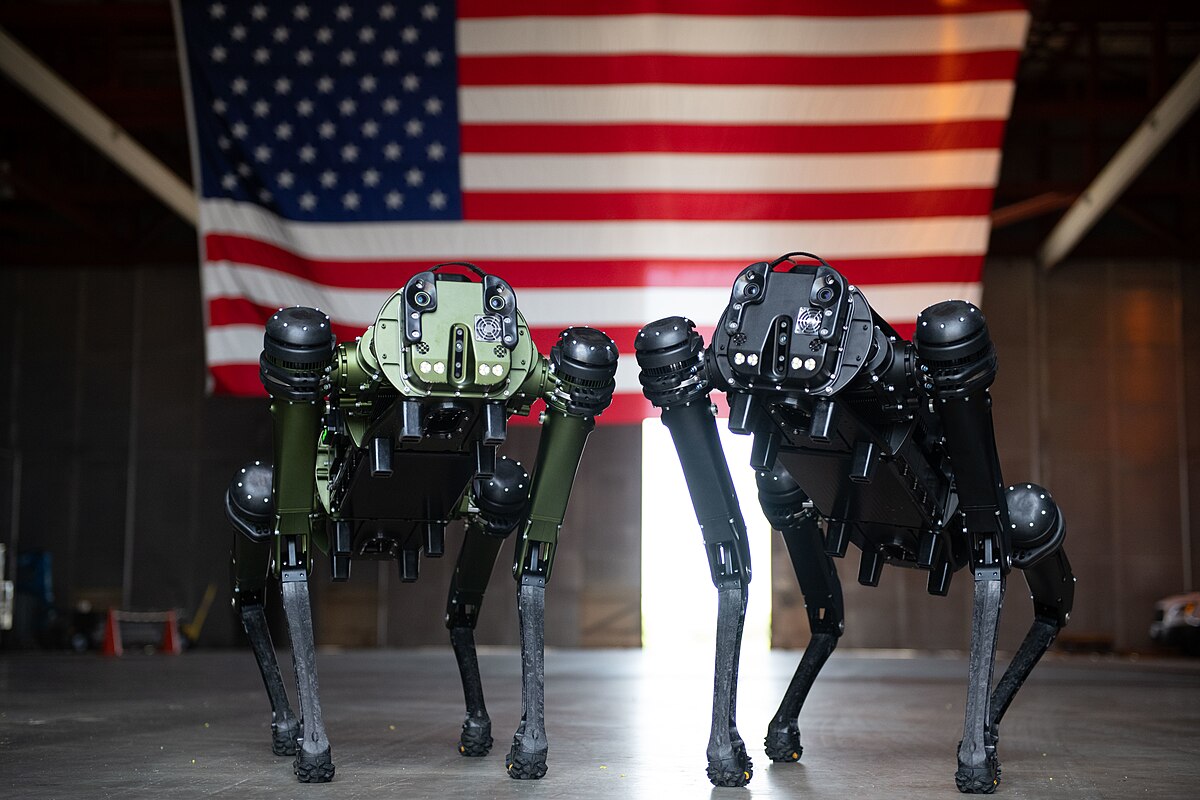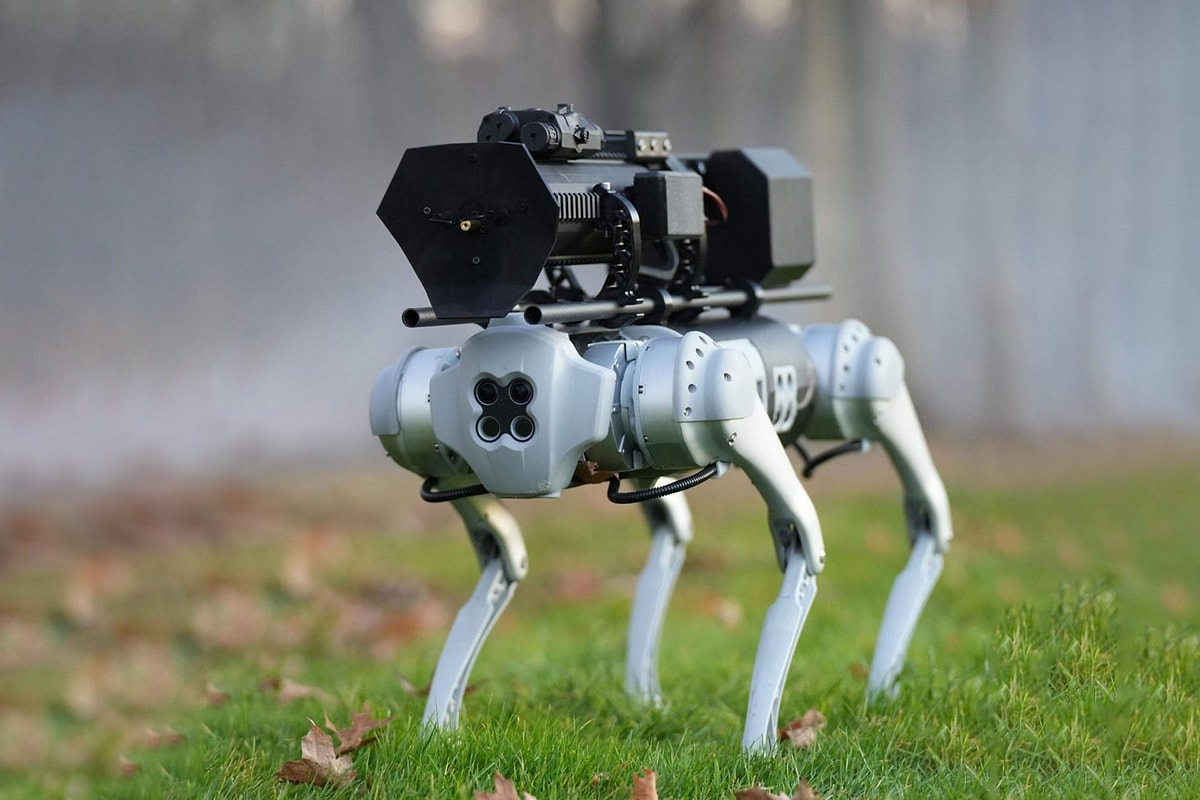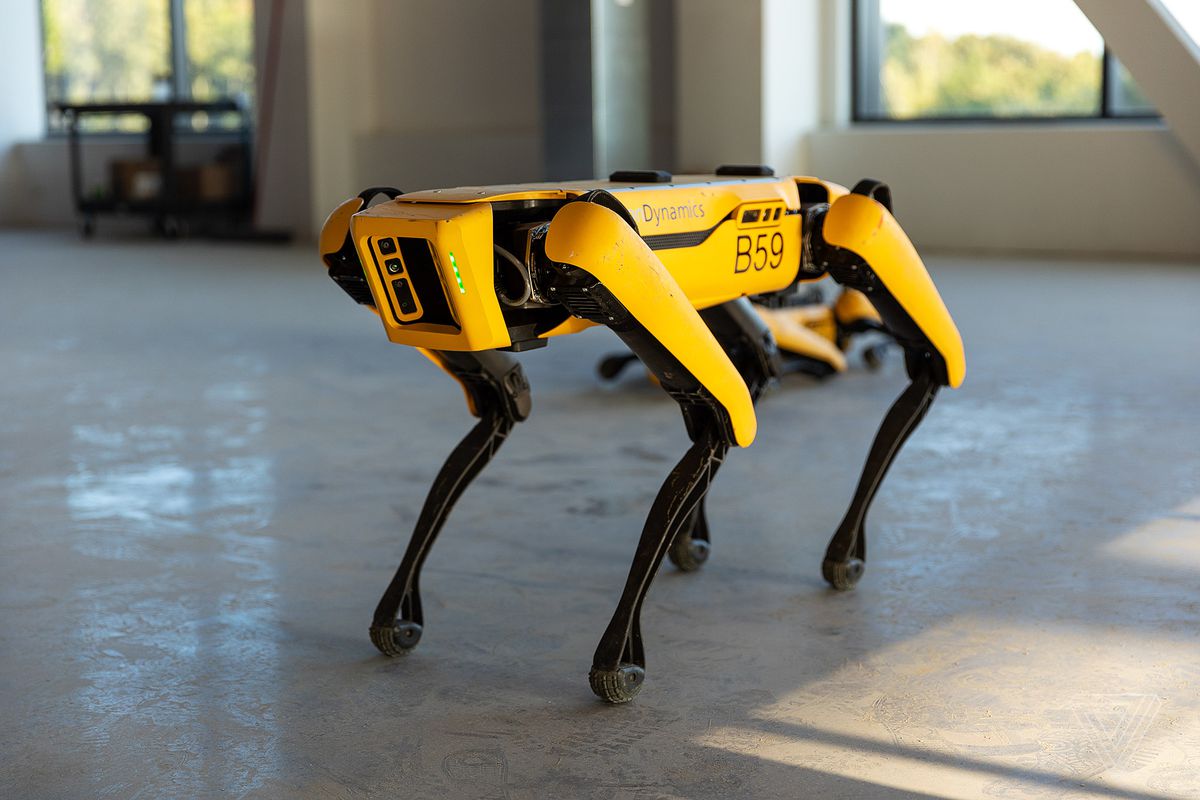An American robot dog exploring an environment similar to the Moon.
In the space race, robot dogs are now the protagonists, and the competition between China and the United States to see who can land them on the Moon first is now a reality. Europe also has this idea, although the Chinese have a significant advantage.
China is confident that it will send its robot dogs to Earth’s satellite before the United States does and is finalising the details. In fact, the Asian country has just deployed its robot dogs in simulated lunar conditions before embarking on a new lunar mission that could take these mechanical dogs to the Moon.
Peking University claims to have developed two prototypes of robot dogs designed to explore terrain considered suitable for establishing human space bases, and the ultimate goal is for groups of robot dogs to eventually roam the Moon on a regular basis.
Chinese researchers are testing and training these robotic dogs to prepare them for future explorations, specifically beneath the lunar surface, an area that China considers ideal for establishing permanent human lunar bases.
According to a 28 September publication by Peking University, a team from the university’s School of Computer Science has developed these two robotic dogs specialised in exploration missions and has tested them in a cave in northeast China that perfectly simulates the lunar soil.
The cave was created by lava flows and is located in a forested region near Jingbo Lake, close to the city of Mudanjiang in Heilongjiang Province. This cave is ‘strikingly similar’ to the lunar underground environment, according to the university’s publication.
Some sections of the cave suddenly narrow to a point that is impassable for research personnel, so robotic dogs are deployed as ‘scouts’ to reliably perform reconnaissance tasks that humans cannot perform.
Testing their performance in a ‘lunar-like lava tube environment’ allowed researchers to advance the embedded intelligence technologies used in space exploration, according to Zhang Shanghang, a researcher at the university and the Beijing Academy of Artificial Intelligence, a non-profit research laboratory also known as the Zhiyuan Institute.
Zhang, who led the development of the two custom robotic dogs, said the models could move autonomously, avoid obstacles, create maps and record high-precision 3D structures inside the caves.
American and European dogs
For its part, NASA is also considering sending robotic dogs to the Moon to study its geology and lunar evolution, according to Space. NASA has included these robotic dogs in its Artemis Programme to provide coverage in space for its astronauts.
The United States would opt for the model called Legged Exploration of the Aristarchus Plateau (LEAP). This is a robot dog weighing about 50 kilos that would be used to explore a rocky elevation on the surface of the Moon, in an area that has also been studied by the European Space Agency (ESA).
The ESA is also interested in sending robot dogs to the Moon and would use the European Large Logistics Lander (EL3), a spacecraft designed to transport cargo to the lunar surface, although this would probably be after the arrival of the Chinese dogs at the end of this decade. In any case, the ESA is the worst placed in this new space race involving robot dogs, although it is also dependent on NASA missions.
The design of the LEAP robot dog is inspired by a robot dog called ANYmal, which was developed by ANYbotics. It can fall and get up, climb steep slopes, dig, move stones and transport them. Both Americans and Europeans agree that robot dogs would significantly increase the possibilities for lunar exploration.

Spirit and Au-Spot, made in California
In any case, although both NASA and ESA have also tested their space robot dogs in lunar environments, they are lagging far behind China. In fact, their robot dogs have limitations on terrain with a lot of sand or large rocks.
The United States has been experimenting with a robot dog called Spirit with the aim of deploying it on the Moon to explore areas that are difficult to access and potentially dangerous. Spirit is a £2.5 million robot dog developed in the Lassie Project by the University of Southern California and has been tested in conditions similar to those on the Moon.
A group of scientists tested Spirit on Mount Hood in Oregon when it was covered in snow. The slopes of this mountain are full of glaciers and volcanic rocks, an environment very similar to the Moon for the group of experts.
In addition to navigating difficult terrain, Spirit can collect scientific data and is expected to participate in future space missions by performing risky tasks and supporting astronauts.
The Au-Spot robot dog from Boston Dynamics, a company owned by Hyundai, has also been tested. The prototype has been developed and equipped by a team of more than 60 researchers from CoSTAR (Collaborative SubTerranean Autonomous Resilient Robots), who have tested it in simulated environments. The original US idea, now on hold, included the possibility of these robotic dogs one day being sent to the Moon, but also to Mars.
A Chinese person on the Moon before 2030
Although China wants to land its robotic dogs on the Moon, it also intends to send a human being to the satellite before 2030, in a space race in which it seems to have a significant advantage over the United States.
If NASA does not speed up its efforts significantly, it will be a Chinese person who sets foot on the Moon for the first time since 12 astronauts did so, all between 1969 and 1972, as part of NASA’s Apollo programme. The first manned moon landing was the Apollo 11 mission, which took Neil Armstrong and Buzz Aldrin to the Moon in July 1969. Eugene Cernan and Harrison Schmitt, from the Apollo 17 mission, were the last to set foot on the Moon in December 1972.
The Chinese space agency has announced that its space programme to land on the Moon is progressing as planned. All tests carried out so far have been successful, and China is confident that it will meet its goal of sending one of its astronauts to the Moon in less than five years.
China has already been to the Moon and explored part of its far side, but now the Chinese authorities have set out to create a permanent lunar base in the next decade. NASA, for its part, is lagging far behind the Chinese. Technology has played a dirty trick on them; their lunar systems are overly complex and have caused numerous problems, if not mishaps.
Elon Musk’s Starship has accumulated countless delays, its SLS rocket was a disaster, and Lockheed Martin’s Orion spacecraft has suffered numerous failures. Added to this is the uncertainty that Donald Trump has brought to the American space race, whose cuts have also had a direct impact on space projects.
China advances every day
However, China is making steady progress in its space race, as confirmed by Lin Xiqiang, deputy director of the China Manned Space Agency (CMSA), who assures that testing of the components needed to carry out the Chinese lunar mission is proceeding smoothly.
Both the Long March 10, a three-stage rocket with super-heavy transport capacity, and the Mengzhou manned spacecraft and Lanyue landing module have passed preliminary thermal and safety assessments and, according to Lin Xiqiang, ‘the overall development of manned lunar missions is progressing smoothly’.
China will continue its tests, rehearsing the ignition of the rocket engine and the docking of components, and will conduct low-altitude flights with the lunar module with a clear objective: ‘We will lay the foundation for sending humans to the Moon as planned,’ says Xiqiang.
China’s space race continues unabated. In 2024 alone, Beijing carried out a record 68 orbital launches, including landmark missions such as the Queqiao-2 relay satellite and Chang’e-6, which collected samples from the far side of the Moon.
China expects to end 2025 with more than 100 launches. In April, it completed the first satellite constellation in history in Earth-Moon space, a necessary step to ensure communications and control of all space traffic between Earth and the Moon.

NASA and ESA programmes at opposite poles
While China is accelerating, NASA has been in limbo since Donald Trump returned to the White House and also cut space programmes. Earlier, in December 2024, the US agency had already postponed the first manned flight of the SLS rocket and the Orion spacecraft until 2026, and the Artemis III moon landing until 2027.
Despite initial plans for the Artemis III spacecraft to enter lunar orbit in 2027, it is highly unlikely that the deadline will be met due to the high cost and complexity of the project. Its rocket, managed by Boeing, cannot be reused and its launch cost exceeds £3 billion.
The Trump administration has revised downwards the budget of almost $100 billion allocated to Artemis, while Boeing, the main contractor for the SLS, is also not going through its best moment after being forced to lay off two hundred employees to balance its books.
For its part, the European Space Agency does not have any space missions on the horizon either. On the contrary, its Starship project has accumulated failures and is still a long way from being able to support manned missions.
Commercial conquest
Although China, the US and Europe have all considered using robot dogs to colonise the Moon in some way, it is China that is clearly leading the space race.
Unlike the US and Europe, China’s space programme is a priority, it meets its deadlines to the letter and there is no shortage of funding for it. Outpacing its rivals is also a proud goal for the Chinese, while the US and Europe hesitate with their plans.
The new space race bears little resemblance to the one between the United States and the Soviet Union, as economic objectives now take precedence and all players know that whoever gets there first will probably set the rules for the future and be better positioned than anyone else to take commercial advantage of the Moon.
China’s terrestrial wolves
Apart from the space robot dogs developed by China, the country also has other four-legged robots that it does not call dogs, but robotic wolves, and which it showed off in the parade marking the 80th anniversary of its victory over Japan.
Although the new missiles were the highlight of the parade, drones, a technology to which China also pays special attention, with the Loyal Wingman model at the forefront, and of course the robotic wolves, also featured prominently.
These armed four-legged robots can move and even run across all kinds of terrain and are capable of precision attacks from 100 metres away.
The robotic wolves have been developed by the China South Industries Group (CSGC) and were officially unveiled at the end of 2024. In China, they are called ‘combat robot wolves’, although they are also referred to as ‘China’s future soldiers’.
They weigh 70 kilograms, can carry up to 20 kilograms of ammunition or supplies, and have an autonomy of three hours. In addition, they have a combat range of up to two kilometres.





